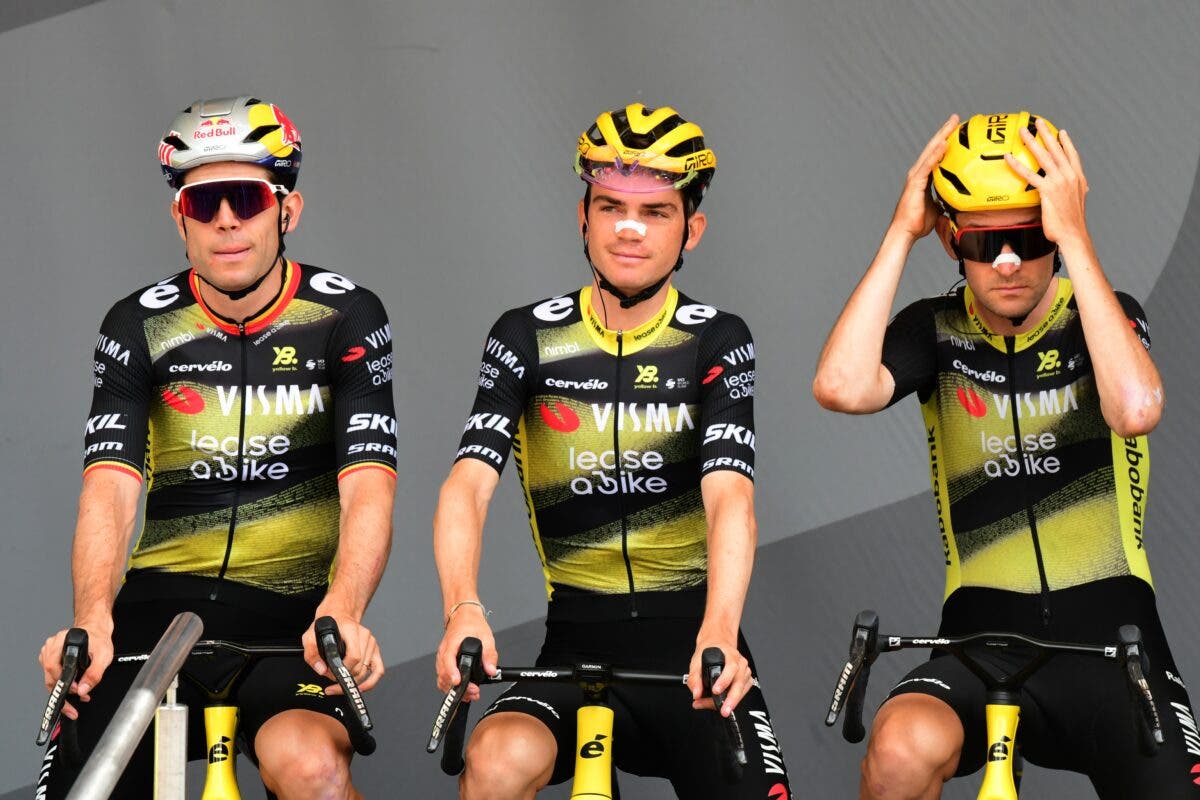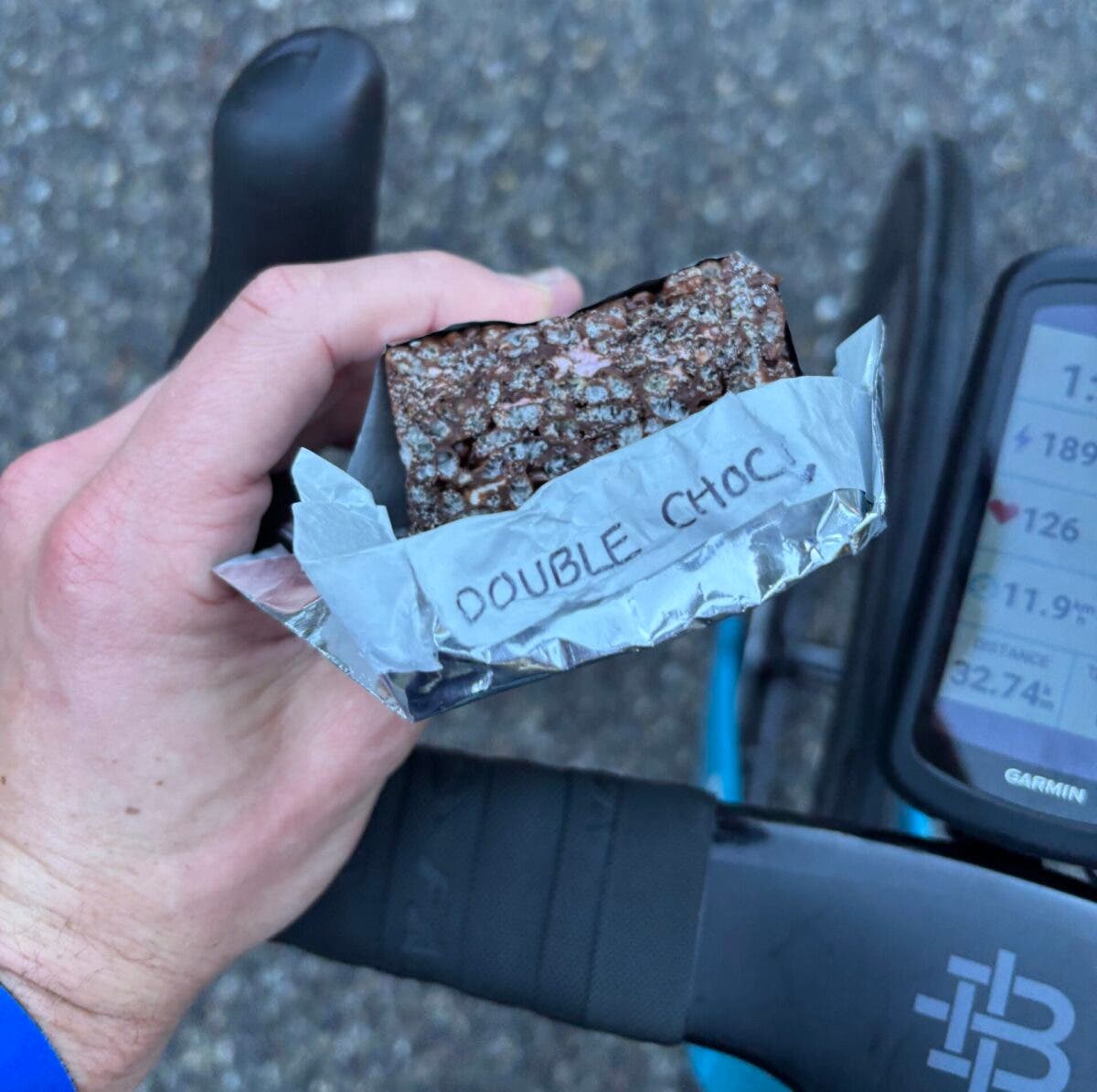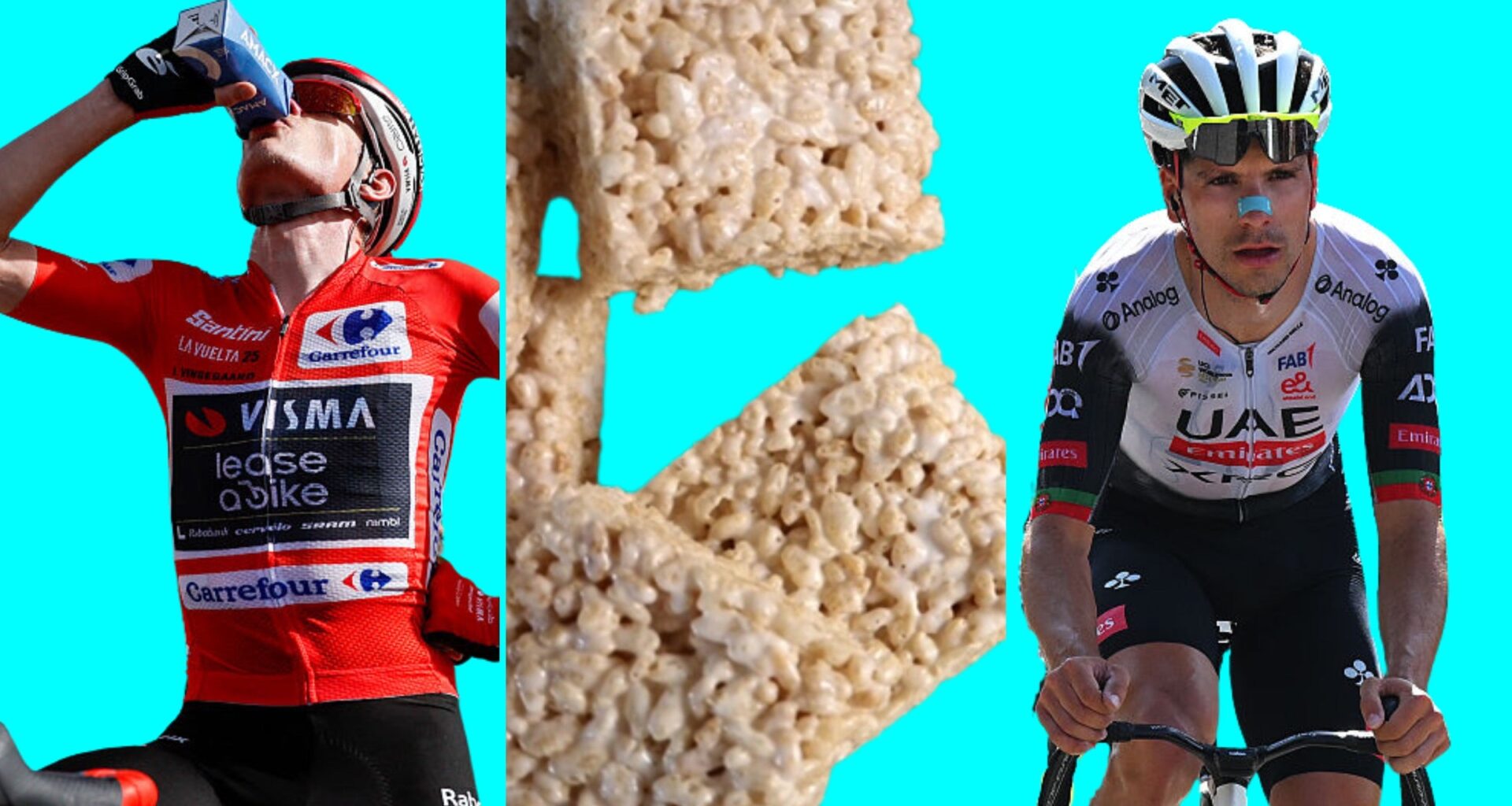Updated October 31, 2025 09:10AM
Don’t go thinking that the Tour de France is all about altitude training, wind tunnel testing, and $16,000 super bikes.
Some simpler, more accessible, and more affordable hacks swept the peloton in 2025.
Home-made cereal bars, fancy fruit juice, and old-school nose plasters were all the rage in a season otherwise defined by $60 million super teams and PhD sport scientists.
So if these things are approved by Tadej Pogačar, Jonas Vingegaard, and Remco Evenepoel, should you go try them too?
Nasal strips
 Nasal strips took the Tour de France by storm in 2025. (Photo: omain Doucelin/NurPhoto via Getty Images )
Nasal strips took the Tour de France by storm in 2025. (Photo: omain Doucelin/NurPhoto via Getty Images )
If you were wondering why riders started looking a little different this season, it wasn’t only the wacky helmets and aero sunglasses.
2025 was the year of the nose plaster, the humble sticky strips that were around before Pogi was even born.
Riders from Lidl-Trek, Visma-Lease a Bike, and UAE Emirates XRG were plastering up all through the summer’s grand tours. Mattias Skjelmose even had a set of custom-decorated “nasal dilators” at the Tour de France.
Long-time wearers like Julian Alaphilippe and Tim Wellens could only ride by and remind everyone they did it first.
Nose plasters didn’t only go “back to the future” in the road peloton. These strips were stuck to the noses of world-topping runners, triathletes, and MTBers, too.
But hold the presses – it seems nose plasters might not be worth the time.
Yes, they help reduce the “negative pressure” that can pucker nostrils during heavy breathing.
However, recent studies have shown that even if nasal plasters improve airflow, they offer no physiological benefit to VO2 Max or heart rate response.
Multiple team trainers told Velo that, for many, they’re useful for stopping riders from choking on a sticky energy bar, at best.
“Nose plasters don’t offer a performance advantage per se. They can give increased comfort for some, and can increase ease of breathing when eating,” said James Spragg, a lead trainer at Tudor Pro Cycling.
“It’s probably just a fashion thing that more riders are suddenly using them,” Spragg said.
But that’s not to say nose plasters are totally pointless. They will be beneficial for athletes with congestion, allergies, asthma, or a deviated septum.
And of course, any placebo can be a significant performance booster.
As one trainer told us, “There’s no real ‘downside’ to them, so if an athlete wants to wear them and feel good with them, we’re not going to stop them.”
Nasal strips: Yes or no?
 Skjelmose used a collection of plasters custom-drawn by his 12-year-old sister-in-law. (Photo: Dario Belingheri/Getty Images)
Skjelmose used a collection of plasters custom-drawn by his 12-year-old sister-in-law. (Photo: Dario Belingheri/Getty Images)
So should you try nose strips?
If you suffer from specific nasal structure issues, of course.
And everyone else?
If you can be bothered to buy some to try, then why not?
They’re dirt cheap, and there’s clearly some “feel good” effect, or they wouldn’t have become the athletic trend of 2025.
Rice Krispies bars
 Riders counter all the gels and drinks with Rice Krispies bars mass-made by team staff. (Photo: Courtesy Lizzie Holden/Pock-It Fuel)
Riders counter all the gels and drinks with Rice Krispies bars mass-made by team staff. (Photo: Courtesy Lizzie Holden/Pock-It Fuel)
OK, Rice Krispies bars are no sophisticated fueling breakthrough.
Far from it. They’re the lunchbox favorites of kids world-over.
But that’s what makes their newfound popularity so unique.
These delicious bricks of marshmallow and puffed rice couldn’t be much further from the sophisticated hydrogels and potent carb powders that otherwise power the pro peloton.
“Everyone has Rice Krispies snacks at the moment,” Lotto staffer Bieke Cornelle told Velo during the Tour this summer. “They’re the most popular bar in the peloton!”
It’s no surprise riders started going wild for these treats in 2025. They’re loaded with carbs, low in fiber, and don’t turn into a pitiful mush in the jersey pocket.
And perhaps most importantly, they provide welcome relief from a racing menu of gels, drinks, more gels, and more drinks.
And like the trend for nose strips, it’s not only cycling teams who are filling their baskets with rice cereals and marshmallows.
Across the athletic border, pro runner Molly Huddle recently told Front Office Sports she gorges on boxes of 16 (!) shop-bought Treats when she’s carb-loading for a marathon.
Trail runners, triathletes, and ski mountaineers are all chewing on Krispies before, during, or after their sessions.
Rice Krispies bars: Yes or no?
 Pro racers Lizzie Holden and Nick Schultz developed a ‘Pock-It Fuel’ recipe that’s being batch-made throughout the peloton. (Photo: Courtesy Lizzie Holden / Pock-It Fuel)
Pro racers Lizzie Holden and Nick Schultz developed a ‘Pock-It Fuel’ recipe that’s being batch-made throughout the peloton. (Photo: Courtesy Lizzie Holden / Pock-It Fuel)
Should you fuel your rides with Rice Kripies bars?
Absolutely, yes.
They’re satisfyingly chewy, decadently sweet, and have a slightly salty aftertaste that satiates your sweaty cravings. And better still, you can buy them at almost any store.
If you’re more proactive than us, they’re easy to make at home, too. This recipe from the WorldTour racers behind “Pock-It Fuel” is regarded as the haute cuisine of cereal bars.
Whether you buy Krispies bars pre-made or make them from scratch, they’re so cheap that there’s no downside.
One mass-market Krispies Treats bar provides 25g of energy-giving carbohydrates for around 50 cents. You don’t need to go anywhere near a calculator to understand that’s a better carb-to-cost ratio than your average $3 dollar, 40g carb energy gel.
However, this recommendation does come with a caveat.
Rice Krispies bars are not “better” than gels.
They’re bulky, less carbohydrate efficient, and fiddly to open.
They’re certainly not fuel for an interval session or short race.
But for a long ride, they’re the perfect salve to sweet, slimey, samey, sport nutrition. Both your palette and your wallet will thank you if you add them into your jersey pocket picnic.
Cherry juice
 These blue bottles of cherry juice made by Amacx were everywhere this summer. (Photo: OSCAR DEL POZO/AFP via Getty Images)
These blue bottles of cherry juice made by Amacx were everywhere this summer. (Photo: OSCAR DEL POZO/AFP via Getty Images)
The finish lines of 2025 tasted like blood, sweat … and tart cherry.
After years of being slurped by some, cherry juice became the post-race drink of almost every rider in 2025.
Pogačar, Vingegaard, and Evenepoel were all seen guzzling the red elixir the second they hit “stop” on their head units. This year, the distinctive blue cartons of Amacx juice seemed more common at Tour de France finish-lines than cans of good ol’ cola.
Why the craze for cherry?
“It’s well-researched that cherry juice helps with recovery after muscle-damaging exercise,” Tudor Pro Cycling nutrition consultant Tim Podlogar told Velo. “The juice contains polyphenols that have now been proven in many studies to improve recovery.”
Polyphenols are antioxidizing, anti-inflammatory wonder-compounds that help reduce the muscle tears and inflammation of intense exercise.
In addition to doing away with DOMS, tart cherries also contain high concentrations of the “sleep hormone” melatonin.
In short, cherries stop your legs from getting sore, and they help you sleep.
But sadly, it’s not as straightforward as going to the local store and buying a carton of cherry drink.
Most regular juice won’t contain a high enough concentration of polyphenols to provide the cherry miracle cure. That’s why brands like Amacx, 6D, and Enervit are making carb-boosted cherry extract drinks specifically designed for sporting recovery.
Cherry juice: Yes or no?
 Pogačar and UAE Emirates use a powdered cherry product made by Enervit that’s dissolved into water. (Photo: Tim de Waele/Getty Images)
Pogačar and UAE Emirates use a powdered cherry product made by Enervit that’s dissolved into water. (Photo: Tim de Waele/Getty Images)
Should you add cherry juice to a pantry already loaded with protein powders, carb drink mixes, and energy gels? [And maybe now also Rice Krispies bars?]
The crazy-popular Amacx drink used by half the Tour de France costs a whopper $70 for 12 bottles, working out to $5.83 per 500ml serving.
For us “normies,” that’s a lot of cash for what’s likely to be a very marginal gain.
It’s also worth noting that cherry juice should only be slurped after the most severe workouts. Nutrition experts warn against using it after daily training as it blocks the break-and-rebuild process that’s essential to future growth.
At such a prohibitive cost, cherry juice is probably only for the cyclist who has already got their diet, sleep hygiene, and training plan on point, and has cash to burn.
And the remaining 99 percent?
Drink your chocolate milk. Pocket your bank card and put your feet up. And then enjoy the sound sleep of someone who knows they saved their cash for something more crucial.

